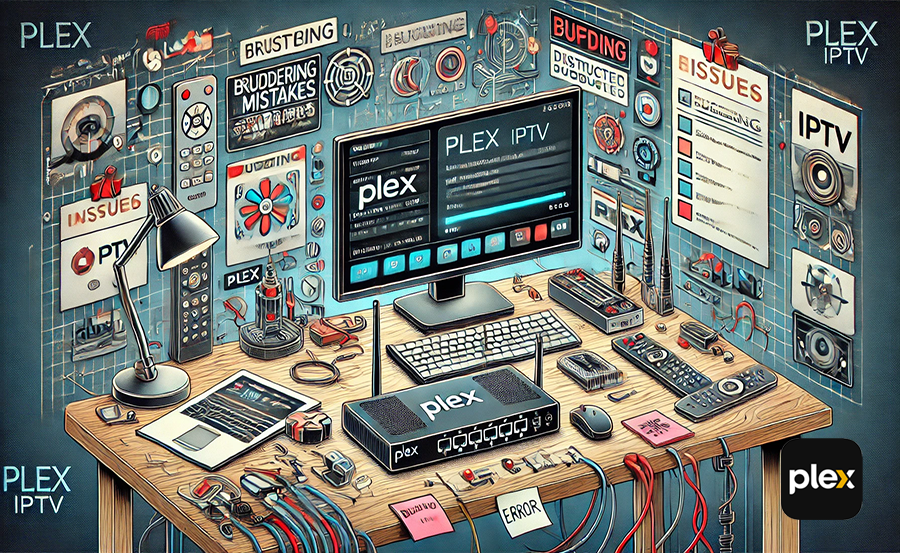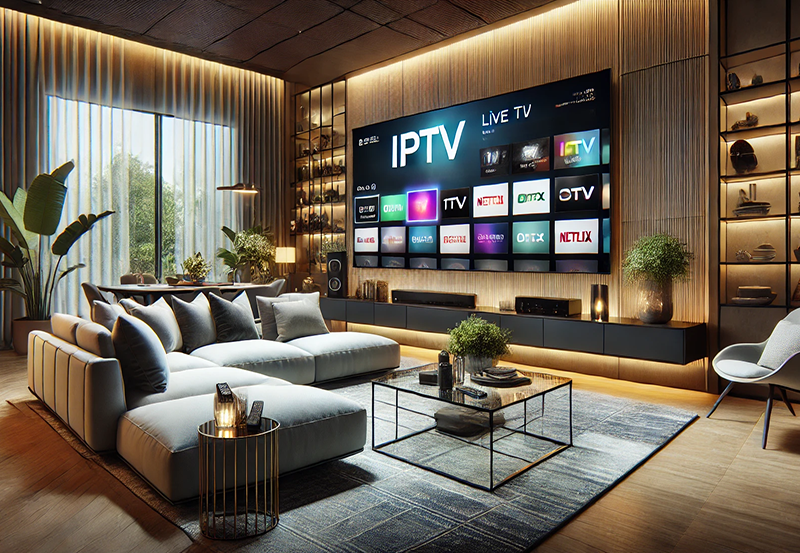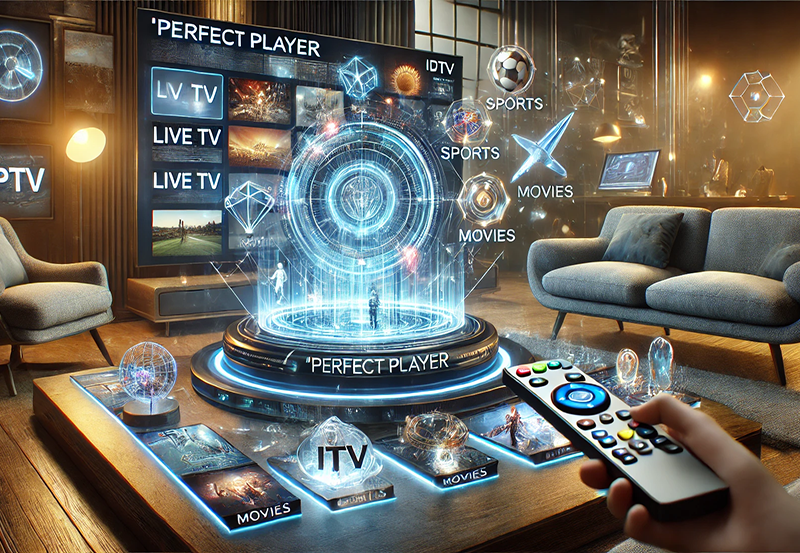Streaming has become an integral part of our daily lives, offering unparalleled convenience and access to a world of entertainment at our fingertips. Plex IPTV is a popular choice that strikes the right balance between functionality and usability. Yet, as with any digital service, issues can arise. This comprehensive guide covers the top five common Plex IPTV streaming missteps and offers practical troubleshooting solutions, ensuring that you can enhance your viewing pleasure without breaking a sweat.
Getting Started with Your IPTV Subscription
Choosing an IPTV subscription can feel daunting, especially for beginners. There are various packages and service providers, each with unique offerings. It’s crucial to select one that aligns best with your viewing preferences and technical requirements.
First things first, you must acquaint yourself with the basics. IPTV stands for Internet Protocol Television, which fundamentally changes how traditional broadcasting works. Instead of relying on cables or satellite signals, IPTV uses the internet. This simple shift in technology offers more flexibility and choices.
Pro Tip:
Stream live sports and entertainment seamlessly with Top IPTV subscriptions for unparalleled quality and performance.
- Check if your broadband is up to the task.
- Consider the number of devices you’ll be using.
- Ensure your chosen service supports the channels and features you want.
Identifying the Appropriate IPTV for Beginners
As a beginner, diving into the world of IPTV might feel overwhelming. To avoid mishaps, start with a reliable provider that offers an easy-to-use interface and solid customer support. Services with intuitive setup processes and trial options can be a good start.
Research is your friend here. User reviews are a treasure trove of information when evaluating any IPTV service. They shed light on real-life issues and benefits, helping you make an informed decision.
Enhancing Your Viewing Pleasure with Smart Choices
Once settled with an IPTV subscription, the next step is to optimize your setup. This process isn’t just about the software; your hardware matters too. Investing in a quality router or upgrading your internet speed can significantly improve your experience.
Think about how you watch content and tailor your setup accordingly. For example, if you mainly watch content on your TV, a compatible streaming device with a robust Wi-Fi connection will be essential.
Common Streaming Mistake #1: Buffering Issues
Buffering is arguably the most frustrating issue for any streaming enthusiast. It’s that annoying moment when your show pauses, leaving you hanging. Fortunately, most buffering problems stem from either internet speed or network congestion.
Improving your internet connection should be the first step. Sometimes, all it takes is rebooting your modem or router. Other times, you might need a more robust plan from your ISP (Internet Service Provider).
- Check broadband speed: Aim for a minimum of 25 Mbps for smooth streaming.
- Optimize router placement to avoid interference.
- Use Ethernet connections instead of Wi-Fi for more stable performance.
Advanced Solutions for Persistent Buffering
If buffering issues persist despite your best efforts, delve deeper into your device settings. For tech enthusiasts, tweaking settings like dynamic range compression or resolution adjustments can sometimes offer relief.
Ensure your Plex server has adequate resources. If it’s running on a low-spec device, consider upgrading the hardware or using a more powerful server to handle the load.
Common Streaming Mistake #2: Audio-Video Sync Problems
Nothing ruins a cinematic experience like poorly synchronized audio and video. This issue often arises from transmission delays or codec mismatches within the Plex setup.
Synchronize your settings between the Plex app and your TV or streaming device. Updates to Plex software and your device can fix many sync issues by themselves.
DIY Fixes for Audio-Video Sync
Sometimes, the solution is more straightforward than expected. Adjusting the audio delay setting in the Plex app can help align sound with on-screen action. A small tweak could eliminate the desynchronization.
Another strategy is to experiment with Plex app transcode settings. Switching from automatic to a specified quality setting often overrides the cause of sync issues.
Common Streaming Mistake #3: Inaccessible Channels or Content
It’s frustrating when your IPTV subscription promises access to numerous channels, but some are simply unavailable. This can happen for various reasons, like geographical restrictions or outdated IP blocks on your account.
Ensure your subscription is active and correctly configured. Missteps during installation or subscription setup can cause channels not to appear as expected.
Ways to Bypass Content Restrictions
Usage of VPN (Virtual Private Network) services can often bypass geographical restrictions by masking your location. However, choose a reliable VPN to ensure data security while accessing blocked content.
Also, double-check channel availability periodically. Service providers update offerings seasonally or based on licensing agreements, which can affect channel access.
Common Streaming Mistake #4: Server Overload
When sharing your Plex server with friends or family, it can easily become overloaded, affecting performance for everyone. Too many simultaneous streams might lead to lower quality or slower response times.
Effective user management is key. Set user limits for simultaneous streams and allocate appropriate bandwidth to maintain desired streaming quality.
Optimizing Plex Server Performance
State-of-the-art server hardware can handle multiple streams more efficiently. Consider upgrading your server if it recurrently struggles under load. Monitor server usage trends to predict peak demand periods and prepare accordingly.
Server software optimization is equally essential. Regularly clean cache and update applications to the latest versions for improved performance and security.
Maintaining a Balanced Streaming Experience
Balance is crucial for sustained streaming enjoyment. While it may be tempting to open your streams wide open, moderation ensures long-term happiness and service reliability.
Enforce simple rules for connected users to respect network fairness and limit usage to non-peak hours if possible. This approach keeps everyone satisfied and your server running smoothly.
Common Streaming Mistake #5: Security Concerns and Data Privacy
Data security should never be overlooked, especially with IPTV installations involving numerous personal devices and networks. An unsecured setup can expose personal data to unwarranted risks.
Begin with firewall protection on your network. Most modern routers have built-in firewalls, configurable through their setup interfaces.
Protecting Your Data and Enhancing Streaming Security
Regular updates to streaming software are an essential security measure. They provide patches and improvements that protect against vulnerabilities.
Consider using dedicated security software as an additional layer. It’s worthwhile subscribed service built around IP-based video arrangement protection offers real-time threat alerts and security enhancements.
Continuous Monitoring and Security Awareness
Security isn’t something to be set and forgotten. Regularly review access logs from your server to identify unusual activity. Being proactive allows early detection of potential threats.
Foster awareness among your circle of users. Educate them about safe streaming practices, ensuring collective vigilance against online risks.
Broadening the IPTV Horizon: Future Perspectives
The future of IPTV is promising and ever-evolving, shaped by advancements in technology and changes in consumer habits. More services will emerge, offering greater customization and richer interactive experiences.
Keeping pace with these innovations might seem challenging, but staying informed is your best ally. Engage with IPTV communities for insights on trends, technologies, and tips to enhance your streaming experience.
FAQ Section

Why is my IPTV buffer so much?
Buffering typically stems from slow internet connections or network congestion. Checking your internet speed and reducing network load, like disconnecting unused devices, can help reduce buffering.
How do I fix audio and video not matching on Plex?
To fix sync issues, adjust the audio delay settings in the Plex app. Updating the Plex software and ensuring your streaming device is in sync with the app can also resolve the issue.
Are there legal implications with using IPTV?
Using IPTV in itself is legal; however, accessing pirated content is not. Ensure your IPTV subscription is from a legitimate provider with authorized content access.
Can I improve Plex server performance for multiple users?
Enhancing server hardware or optimizing the Plex server settings can improve performance. Limiting the number of simultaneous streams, and balancing usage, can also help maintain quality.
Is a VPN necessary for IPTV?
While not strictly necessary, using a VPN can help bypass geographical restrictions and enhance privacy. Ensure you choose a trustworthy VPN provider for secure connections.
What should I check if some IPTV channels aren’t working?
Check your IPTV subscription status and channel package to ensure it includes the channels you’re trying to access. Regularly updating your channel list and checking your service provider’s updates can also help.
10 Reasons Why Perfect Player IPTV is a Must-Have App





